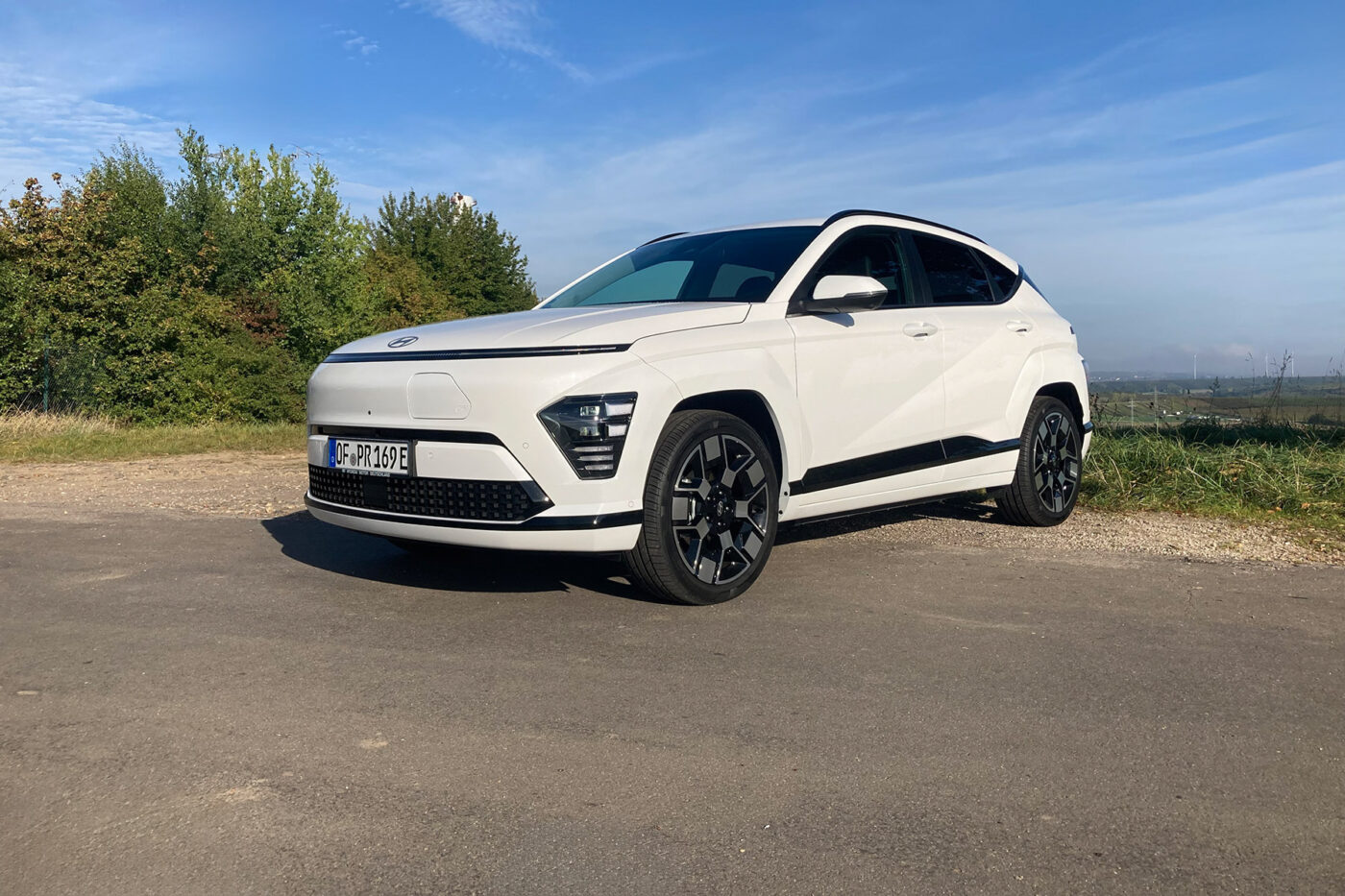
Hyundai Kona Electric: If it weren’t for the price…
There is no question, I stand by my conclusion from last year: the second generation of the Kona Electric is an improvement in many respects. Hyundai only slightly adapted the basic concept (a success factor of the first generation) – based on customer feedback, who wanted a little more space. Some customers of the first Kona generation commented on our previous report that the new model is no longer an option for them due to its size. However, Hyundai will have made this decision partly with a view to other markets and partly based on a more extensive survey.
Personally, I have to say that the larger body (+15 centimetres in length, +6 centimetres wheelbase) is a plus point. With a large dog, the 40 per cent larger boot and the extra space in the back seat are more of an argument in favour of the second generation – but that’s just according to my needs. Nevertheless, I can understand anyone who prefers the smaller, first generation due to their living and parking situation, for example.
Are the detailed improvements enough?
Deciding for or against a model is based on factors such as size, utility value or design, which is undoubtedly somewhat polarising in the case of the new Kona, but not only that. The drive and charging play an important role in an electric car, and here, too, there are a few points to consider regarding the new Kona Electric to decide whether the model suits your needs.
Hyundai provided a Kona Electric with the large battery and top equipment for the more detailed test. On paper, relatively little changed compared to the previous generation. Instead of 150 kW of power, the drive now delivers up to 160 kW to the front wheels. With 65.4 kWh, the battery is minimally larger (previously 64 kWh), and DC charging power increased to a (still manageable) 102 kW. As the drive is efficient, the WLTP range increased from 484 to 514 kilometres.
However, with a test consumption of 24 kWh/100 km, the Kona has lost some of its efficiency. We spent a lot of time on the motorway and at lower temperatures than those currently prevailing in Germany. However, I can’t shake the feeling that a first-generation Kona Electric would have been a little more economical in these conditions, but I can’t prove it without a comparison. Although consumption of well under 20 kWh/100km was still possible on country roads, consumption quickly levelled off at between 20 and 25 kWh/100km on the motorway – as the average consumption shows, more towards the upper end of this range. Although the battery is slightly larger, the slightly higher consumption means that the real range is likely to be similar, if not slightly lower.
Charging performance is fine – up to 60 per cent
With this test car, we set off from Düsseldorf toward Nördlinger Ries on the border between Bavaria and Baden-Württemberg in southern Germany. At around 500 kilometres, this distance corresponds quite closely to the WLTP range of the model. Most people will have realised from the outset that a charging break is necessary for real-life use. As there was no secure charging facility at our destination, we made a second charging stop on the A7 motorway to avoid arriving with an empty battery – but one stop would have sufficed.
Only this stop (and the others on the return journey) revealed a characteristic of the model that we should be aware of: The DC charging power of 102 kW with a 65.4 kWh battery sounds good, but the power already drops noticeably at a charge level of 60 per cent. In the range between ten and 60 per cent, the Kona charges at 90 to 100 kW. Regardless of the temperature, the charging power then drops briefly to just under 80 kW. From a charge level of 70 per cent, only 28 kW flows into the battery.
As a result, it takes almost 12 minutes to get from 70 to 80 per cent – a disproportionately long time for a fast charging process. For the fastest possible progress on long journeys, it is thus advisable to only charge up to 60 or, at most, 70 per cent (it takes six minutes from 60 to 70 per cent) to take advantage of the charging curve. However, almost 40 per cent of the battery, which is large for such a vehicle, cannot be used on long journeys. And based on our motorway consumption, the onboard computer only shows a range of around 170 kilometres at 60 per cent charge, compared to 201 kilometres at 70 per cent.
Even if the values have shifted slightly compared to the first Kona generation, the following remains true: If you can charge (AC) at home or work and only rarely have to go out to a fast-charger, you can purchase the Kona without hesitation if the rest of the vehicle meets your requirements. However, anyone who relies on fast-chargers along motorways or charges a lot with direct current due to a lack of AC charging points should be very aware of this feature.
On the positive side, however, the promised peak charging capacity of 102 kW was easily and repeatedly achieved, even in cold conditions, thanks to battery preconditioning. That is why the charging processes from ten to 80 per cent took around 40 minutes. If you only charge until the charging curve drops, you only need to stay about 25 minutes at the charger and have a battery charged to about 60 per cent. The battery heater does its job well.
Our test also showed that the position of the charging port is not always ideal. As with the first Kona, the CCS socket is located at the front, roughly in front of the driver. At charging stations where the charging point is located in front of the parking spaces, this is almost ideal – simply drive head first into the parking space, and you’re golden. However, during our test, we charged three times within a few days where the station was next to the parking space. That wasn’t a big problem with Fastned’s petrol station-like concept, where you can park so that the nose of the vehicle is roughly level with the charging station. However, two stations were from Aral Pulse, where classic parking spaces are provided next to the charging station. Depending on the length of the charging cable, it means that you either have to park very far forward or very far back in the space – and possibly block paths. Even if I can see the advantages of the front-mounted charger at many stations, with the dirt accumulated over hundreds of motorway kilometres, an electric unlocking system for the charging flap would have been nice, as the numerous marks in the dirt on our test car show. Or, place the charging port at the rear right, as with the e-GMP models from Hyundai. In my experience, these usually remain clean even in the depths of winter.
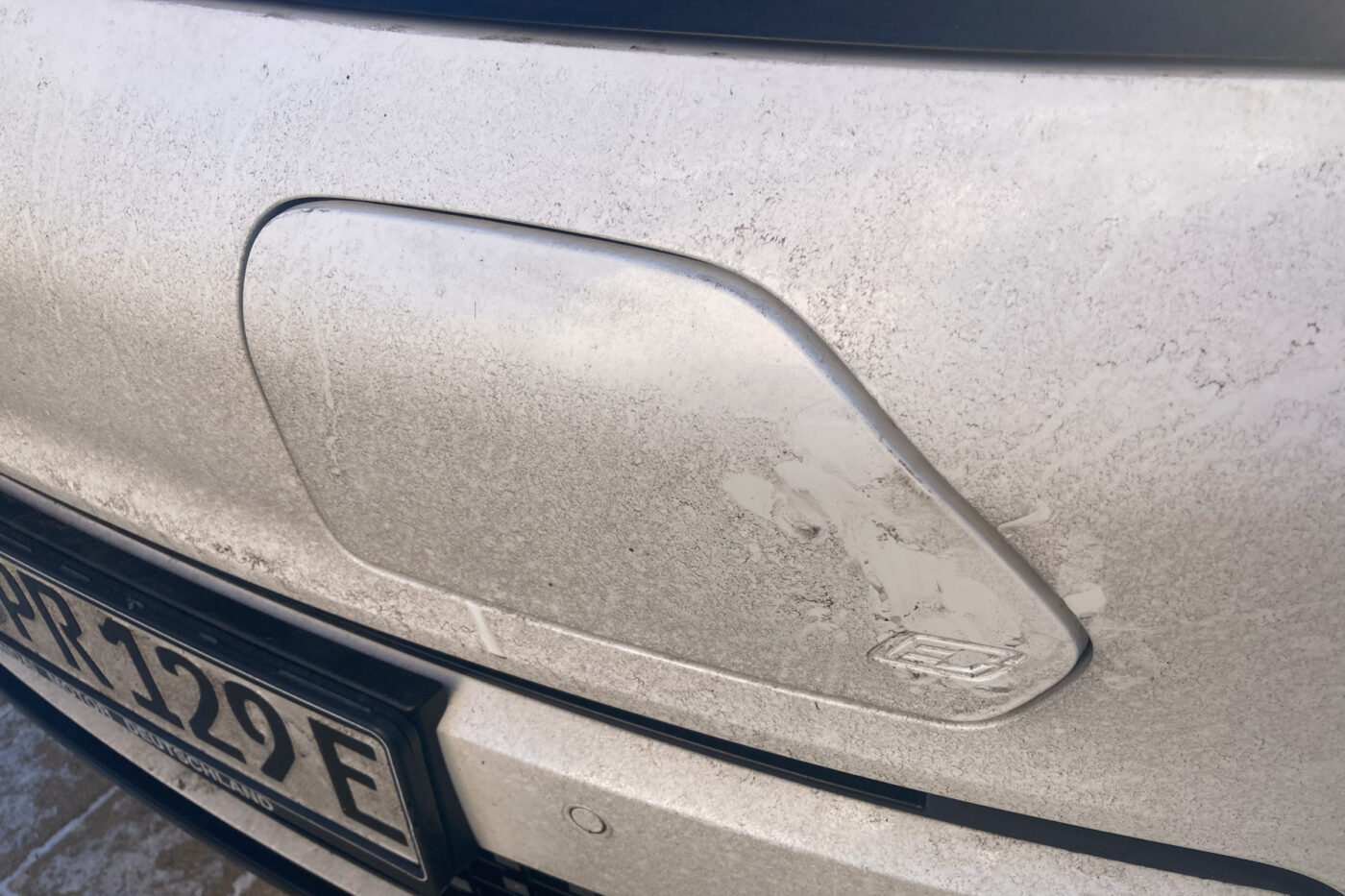
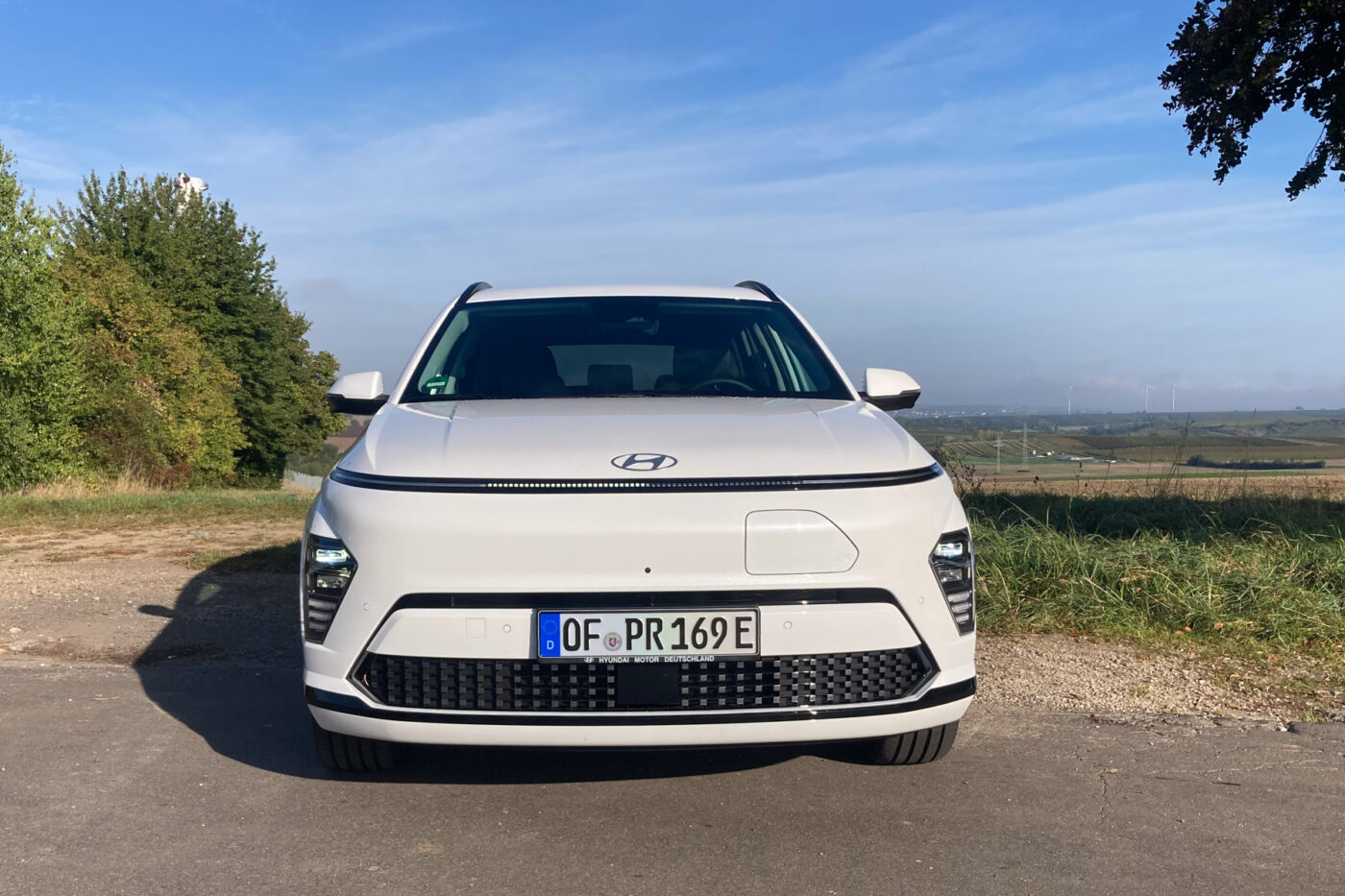
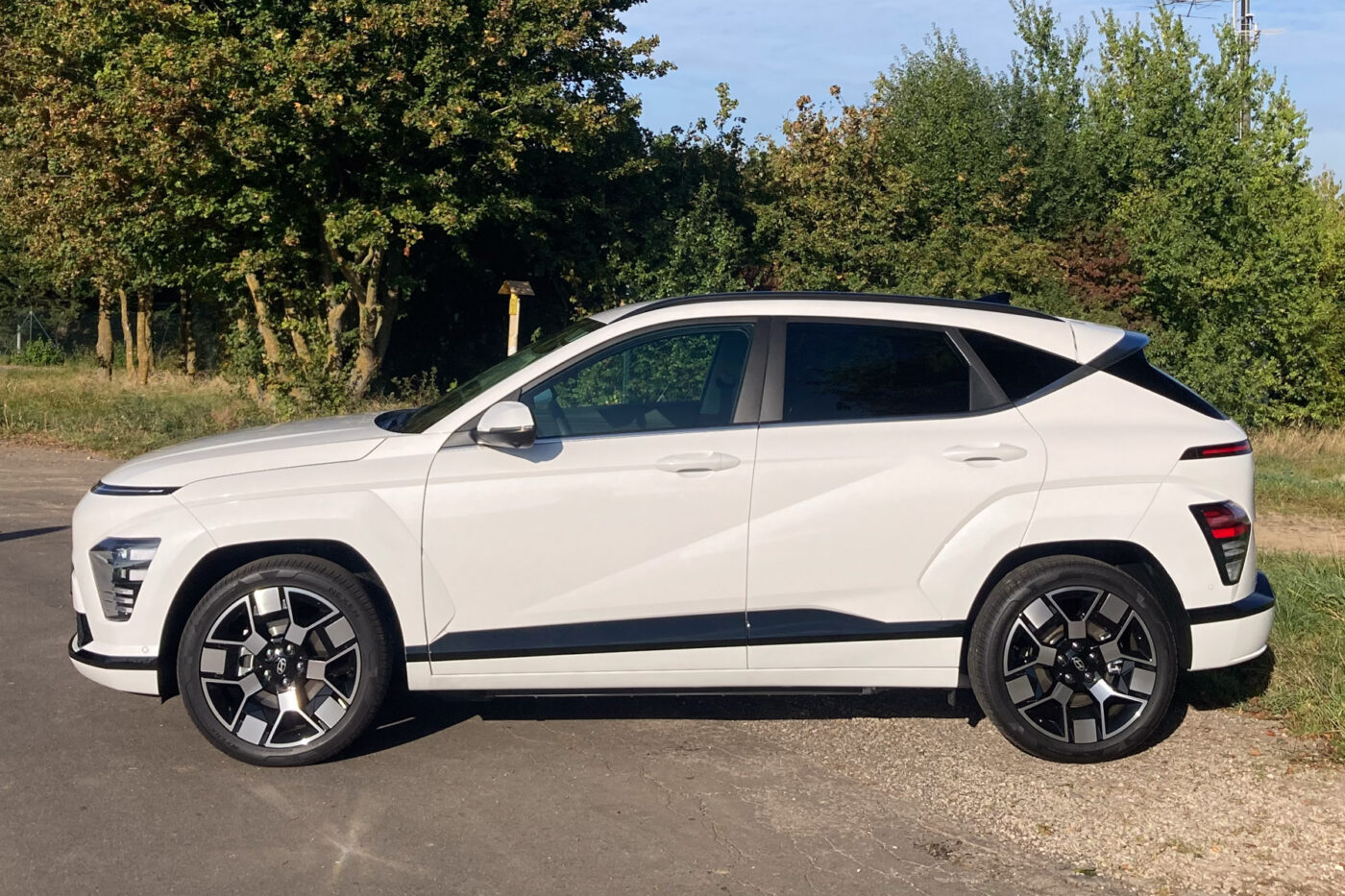
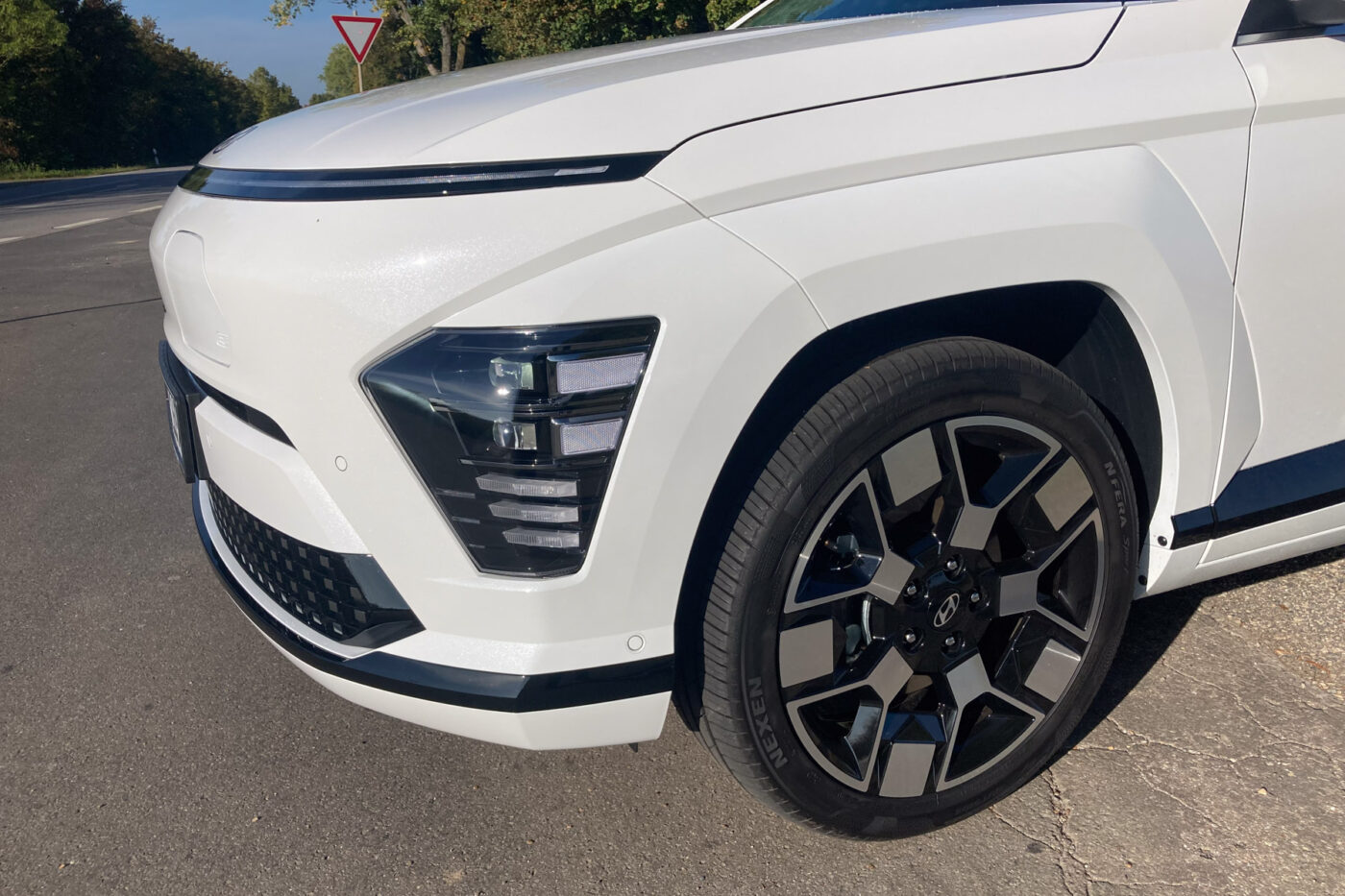
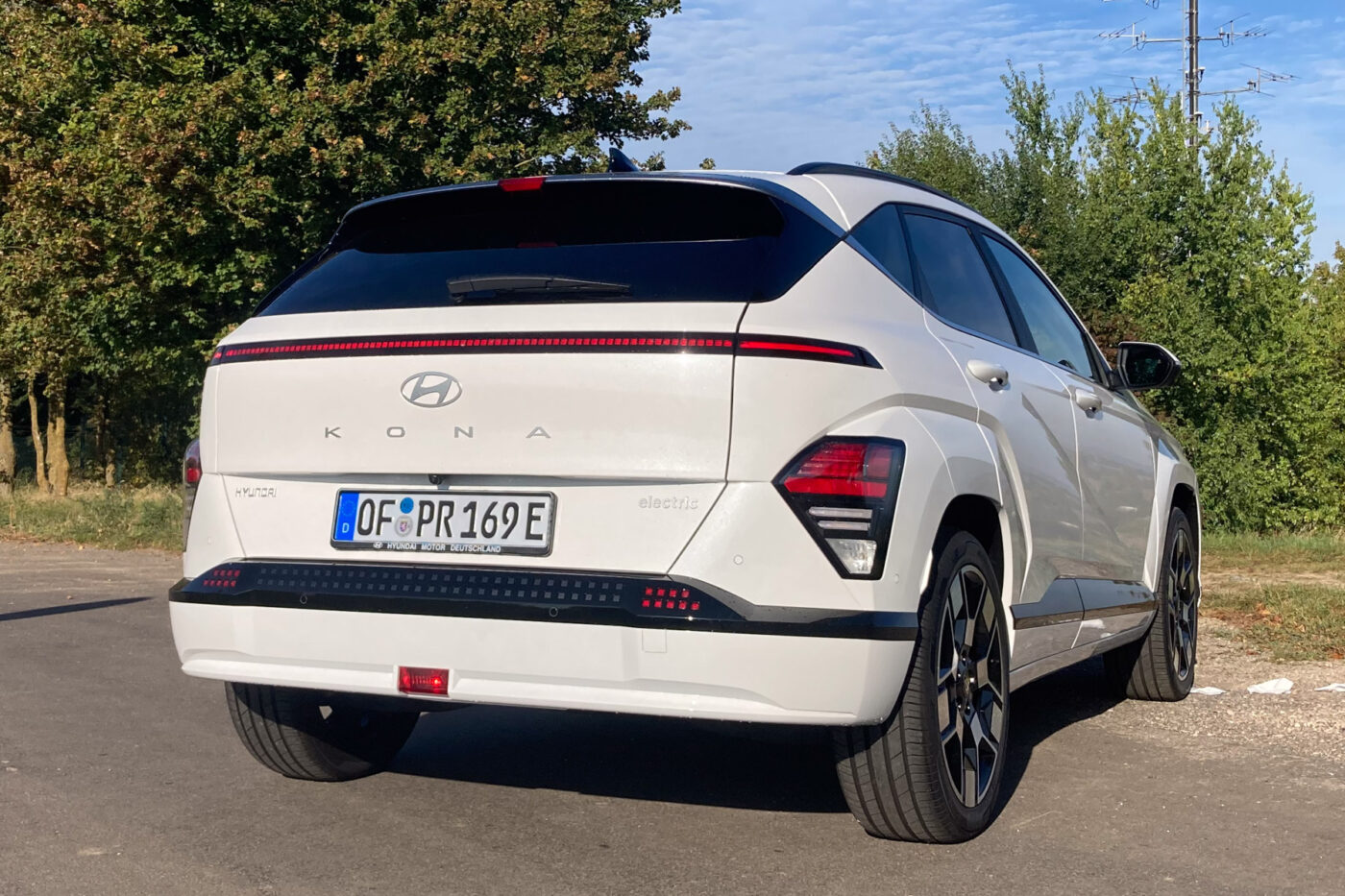
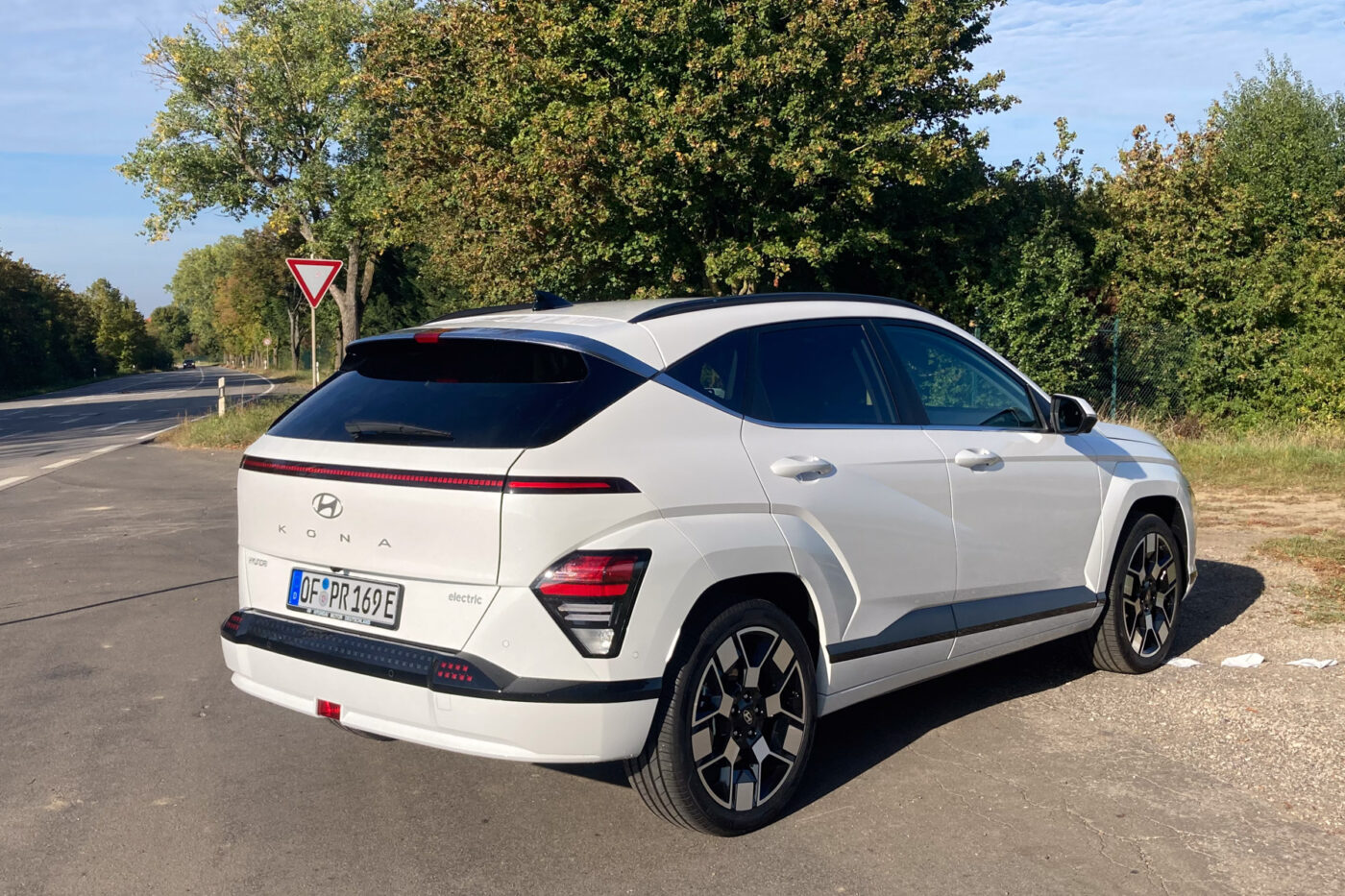
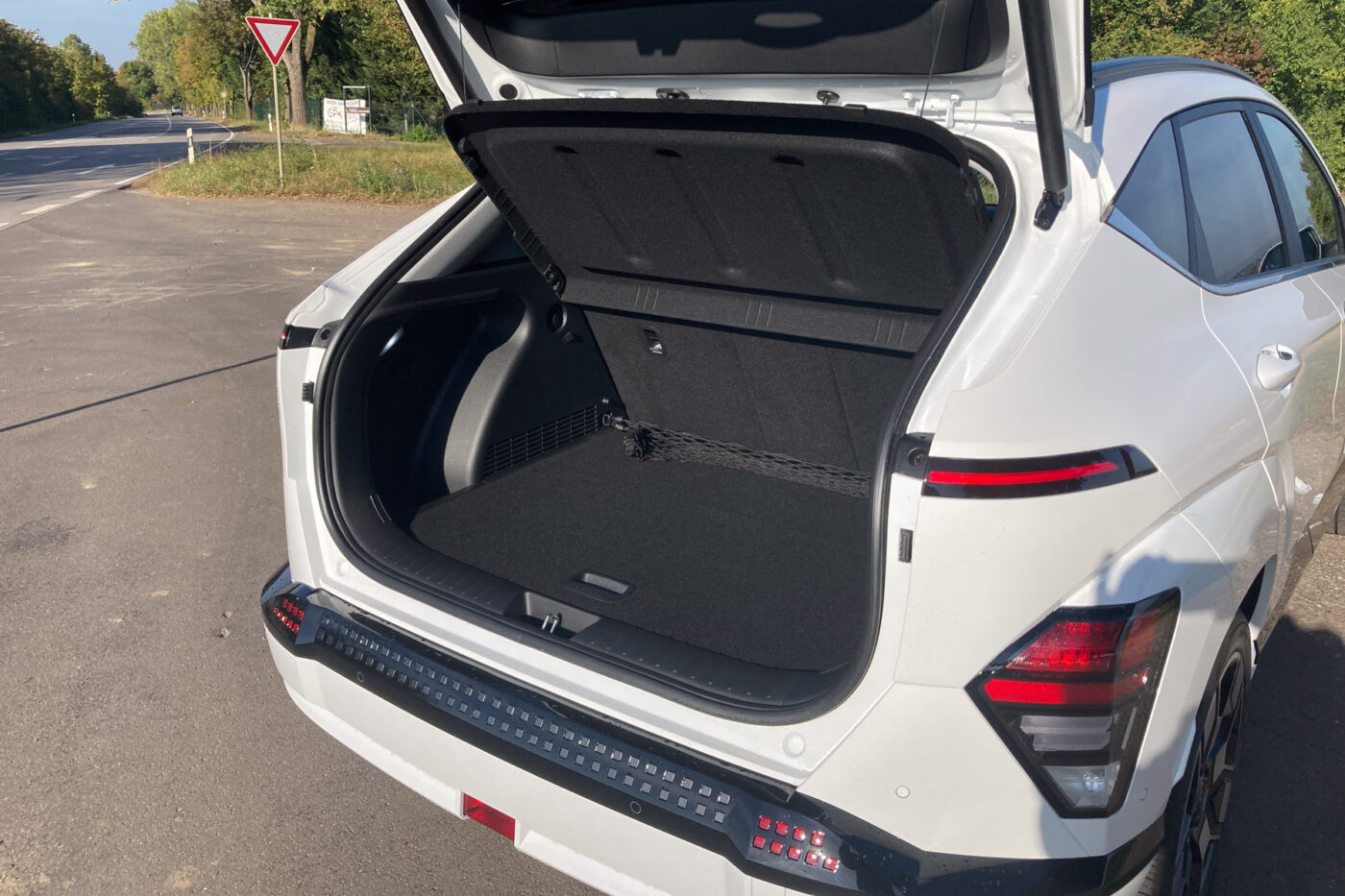
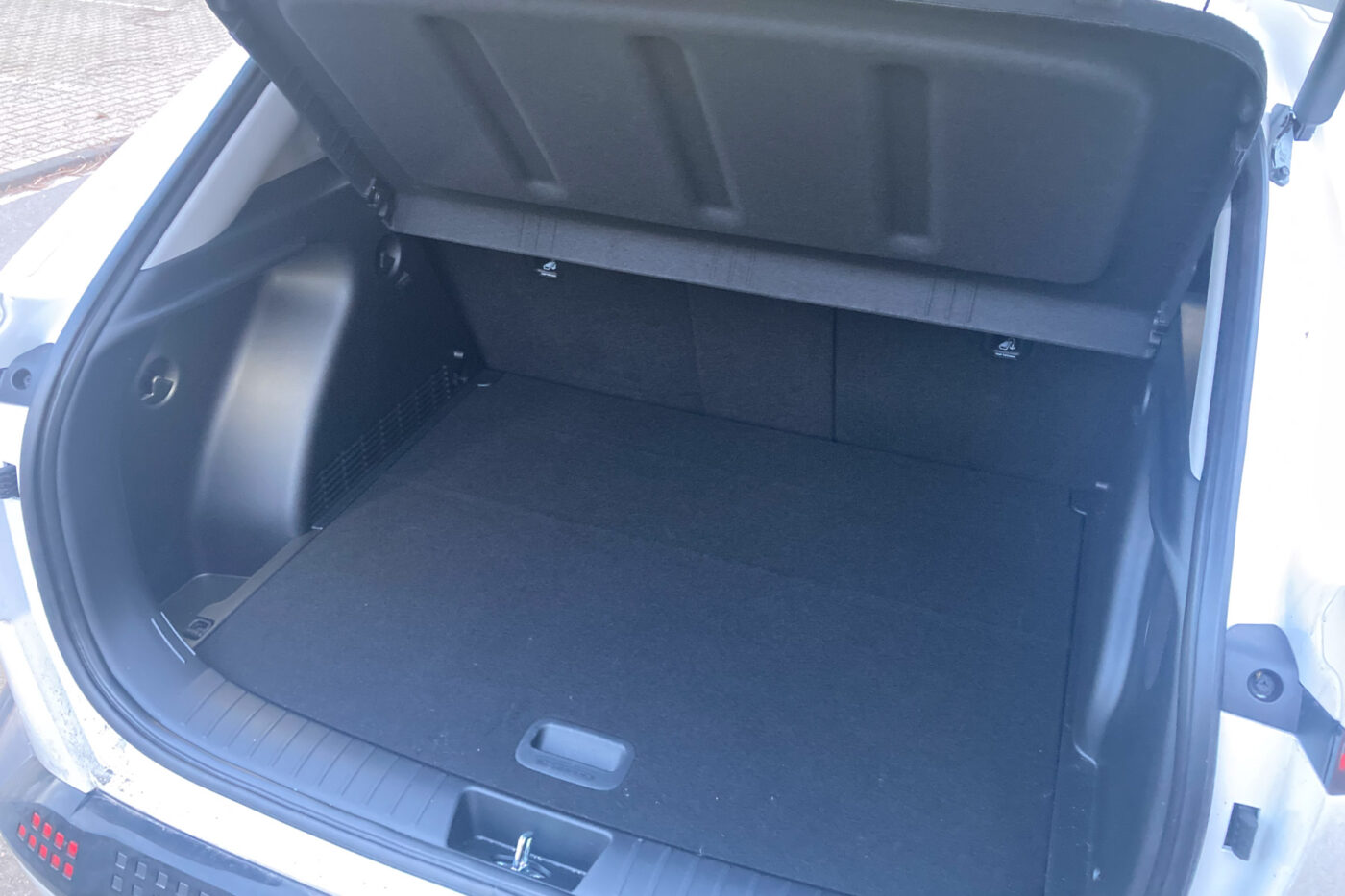
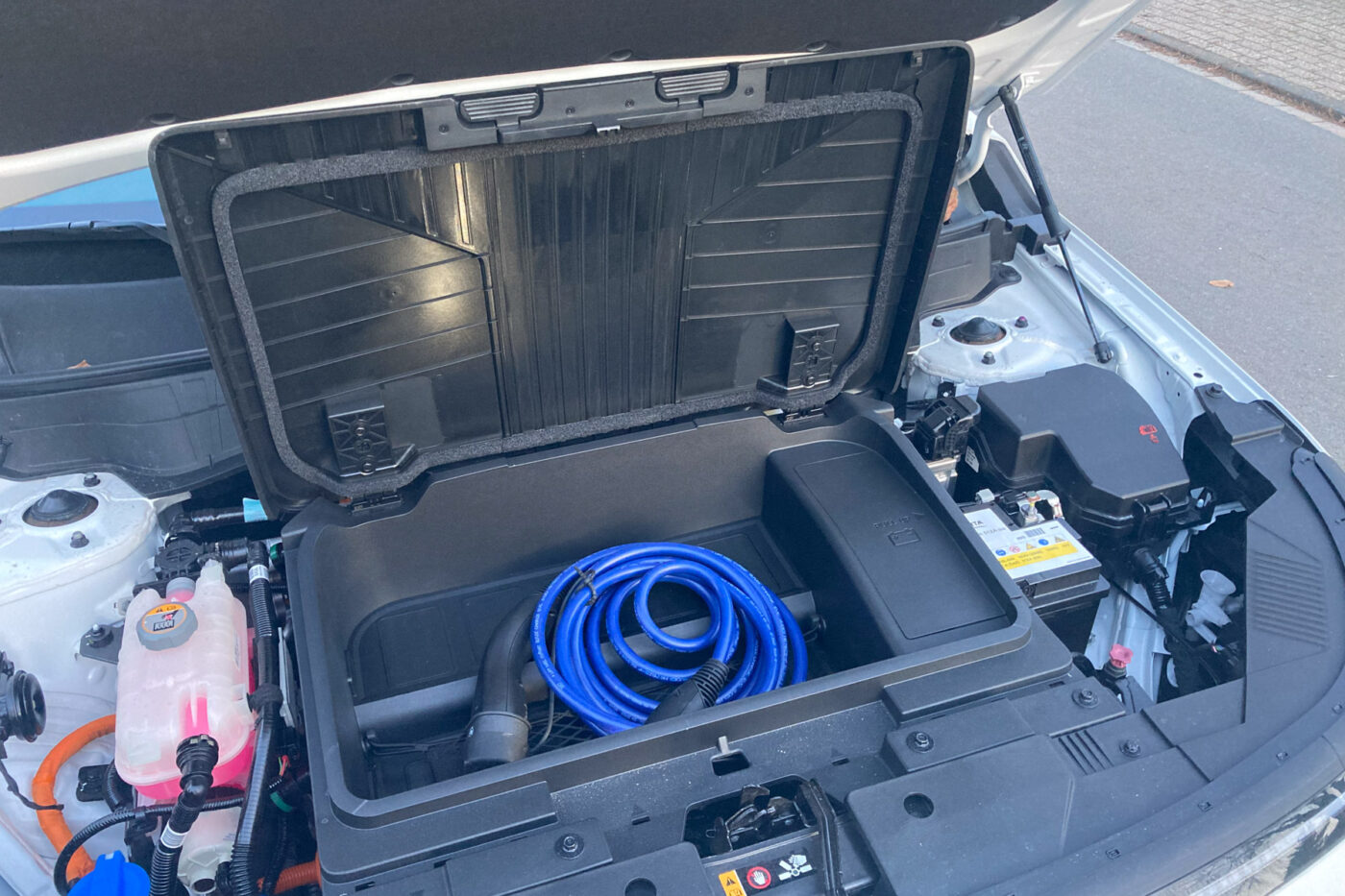
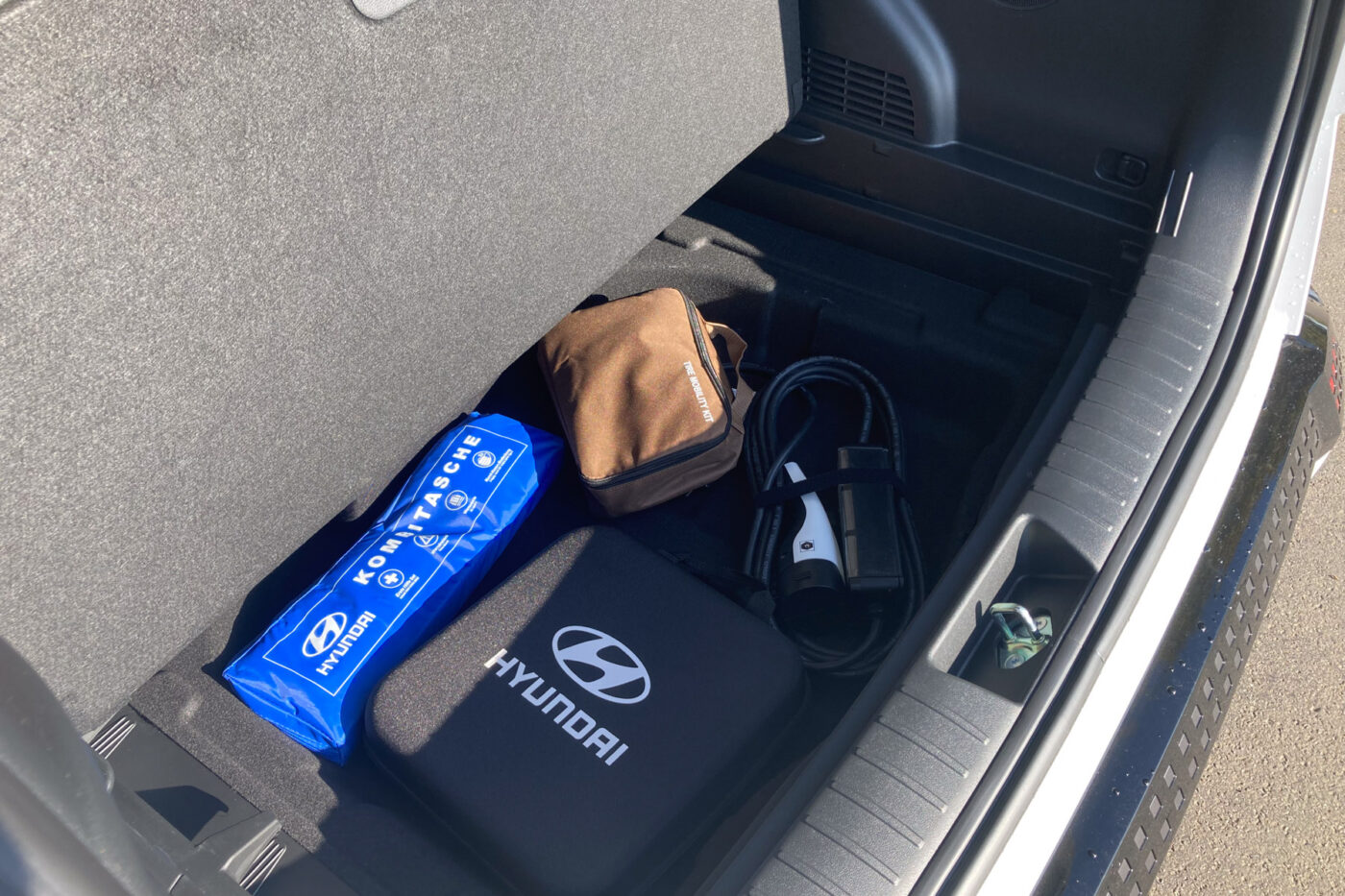
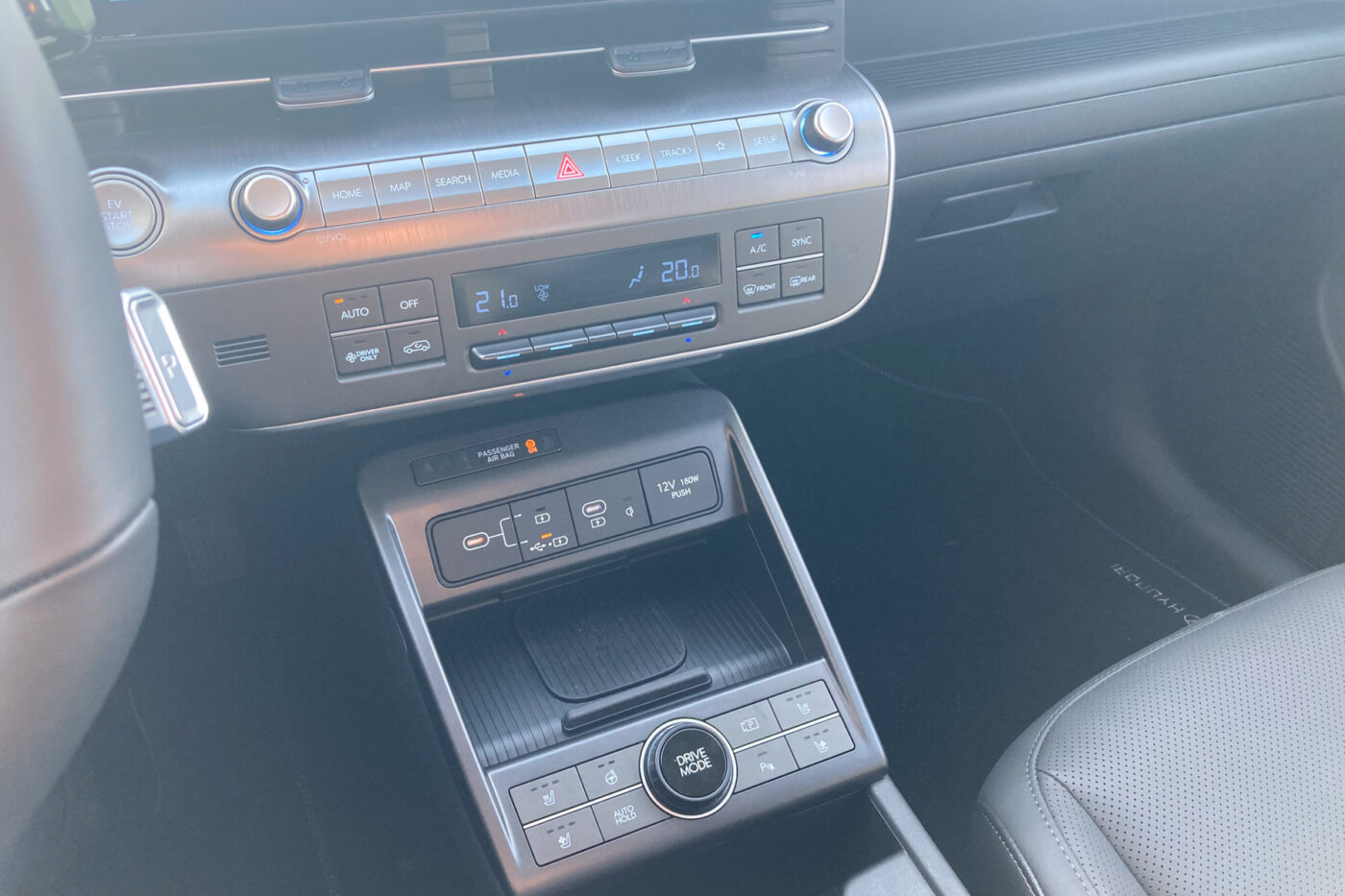
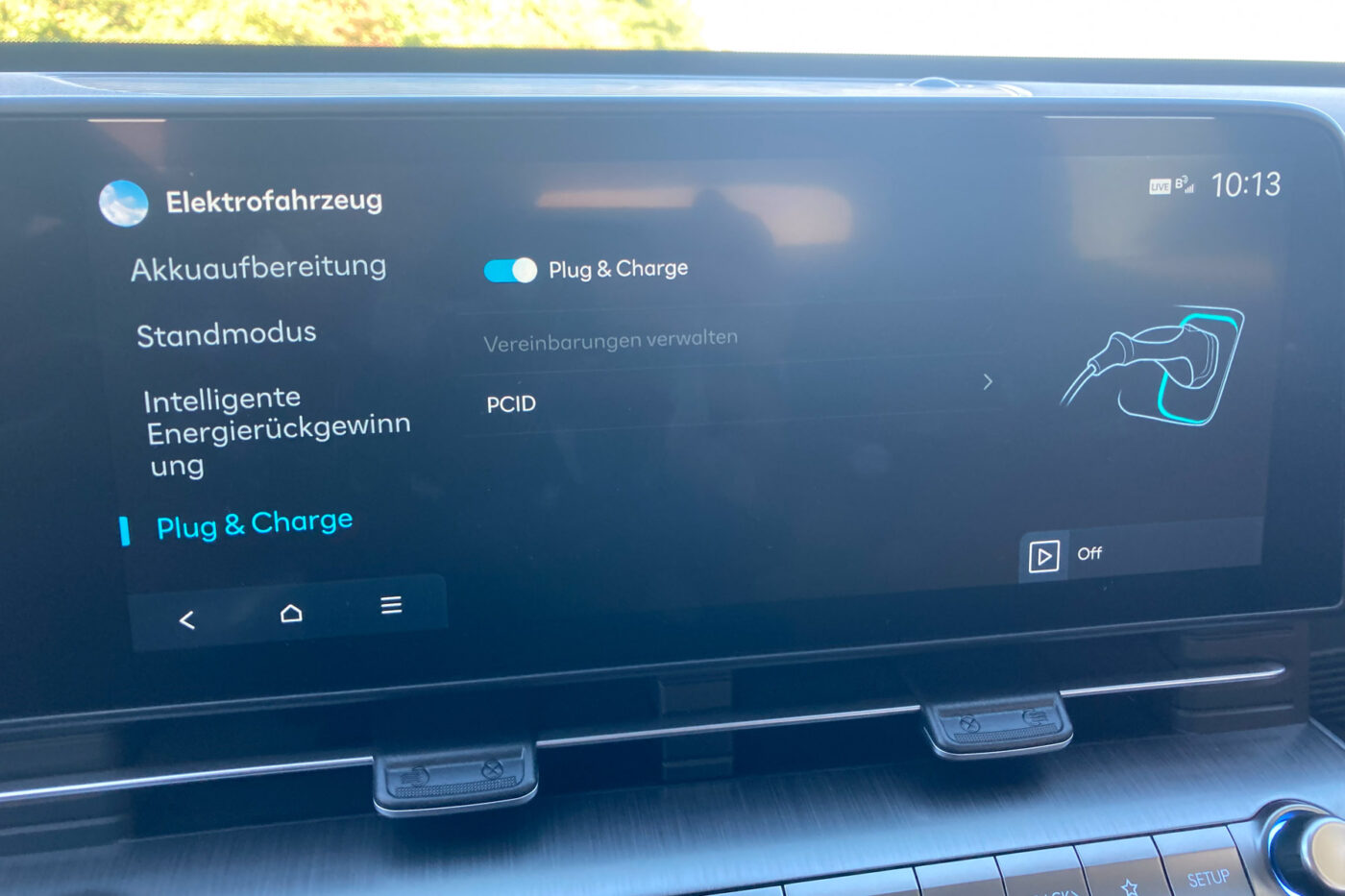
There is still room for improvement when it comes to charging planning. Our test car had not yet received the software update promised by Hyundai in our first driving report. Although sensible charging stops were scheduled in the route planning, they were always up to 100 per cent charge level. Not only does this take a long time (45 minutes from 80 to 100 per cent according to the onboard computer), but the system then assumes that the charge level is too high for the next section of the route. So, the only thing that helps is to plan each charging stop manually and then use the actual charge level to calculate the next section. With the update, the driver can set the charge level up to which recharging should take place. However, the update will not automatically determine the charge level for the required route (as many smartphone apps can do).
The same applies here: if you only charge at your own wallbox, you won’t really care about the charging plan. However, if you are going on a long journey, for example, on holiday, it is still annoying. Speaking of holiday trips, as there is now a small frunk of 27 litres under the front bonnet, the charging cable is accessible even when the boot is fully loaded. Previously, it was stowed in a compartment under the boot floor, but this storage compartment can now be used differently.
While we’re on the subject of annoying factors, the beeping in the Kona Electric should, of course, not go unmentioned. For the description of the “intelligent traffic sign recognition” (ISLA), I refer you to the first driving report and won’t repeat everything. In a nutshell: The car reports every newly recognised speed limit – whether by camera or from the map material – with a beep. If you drive too fast, the vehicle also beeps from the first kph onwards, but in a different tone. Since there are also many false alarms – presumably due to outdated maps, as the test on known roads around your own home showed – and it beeps regularly even without a speeding infringement, the system does not always ensure relaxed driving … to put it mildly.
During the more extended test, the attention assistant behaved similarly. A sensor mounted on the steering column observes the driver and calculates their direction of vision – if they are looking at the road, everything is fine. However, if the driver looks at the speedometer, the infotainment display or the front passenger for too long, the system warns them with a different beep. Again, the intention is good, but the implementation in the Kona Electric is unfortunately still too error-prone. Depending on the angle of the light, the system sometimes really seems to pay attention to the eyes and the direction of vision, but sometimes only to the orientation of the head – and in the latter case, it also triggers, even if the eyes are directed towards the road. There is no question that there have been situations in which the system has been justified. However, the majority were rather unjustified and annoying. Overall, it was noticeable in the test car that you were rather distracted because you wanted to check why the beep was sounding again. And the fact that every time you activate the windscreen wiper system, a display pop-up informs you that the air conditioning is briefly set to recirculate air to keep the windscreen cleaner’s fragrances outside is quite nice for the first few pop-ups, but in the long run it contributes to a kind of information overload.
Pleasant travelling, annoying assistants
Driving and travelling in the Kona has actually become more pleasant. The suspension comfort is quite similar to its predecessor, and the longer wheelbase improves stability minimally. On the other hand, the new Kona is noticeably quieter up to around 120 kph. The seats could offer a little more lateral support for my taste, but they are comfortable. With the new infotainment generation and the improved storage compartments in the centre console, the Kona is a pleasant everyday and touring car for its size – if it weren’t for the beeping.
Opinions differ on the design, the larger body, and the interior concept, with its many control buttons. So, it comes down to personal taste and requirements. As mentioned above, I definitely agree with the size. In terms of design, the combination of the partly rounded shapes with the angular pixel design is far less harmonious than the Ioniq 5, for example, where the pixels meet an inherently angular look. And the rather spacey look on the outside meets a conventional button cockpit inside. The small climate display with a seven-segment display for the temperature display also looks out of date. Regardless of design preferences, the pressure points on the buttons could be better.
After all, the Kona is not inexpensive and, therefore, cannot afford any real weaknesses if it wants to hold its own against the competition. With its large 65.4 kWh battery, the Kona Electric costs at least 47,190 euros in Germany. With the equipment of our test car, the gross costs even add up to 55,140 euros – for a car of 4.35 metres in length. For comparison, even in-house, the Ioniq 5 with a 58 kWh battery is available for 43,900 euros (and thanks to 800 volts with significantly shorter DC charging times). Even a not exactly poorly equipped Ioniq 5 with the larger battery (currently still 77.4 kWh in the configurator, but an update to 84.0 kWh is coming) and an engine output of 168 kW comparable to the Kona costs less than our test car at €54,800. If you opt for a VW ID.3 or even an Alfa Romeo Junior (where you certainly pay something for the brand name and the Italian design), you can also get away cheaper. If you look at the Tesla Model 3 with a different body concept, the Kona has a comparable WLTP range of 513 kilometres from €40,990. In the price region of our test car, Tesla even offers the new Performance version (56,990 euros).
Conclusion
Yes, the new Kona has improved in many respects. The fact that Hyundai wanted to leave some distance between itself and the e-GMP model Ioniq 5 and not position a 65 kWh Kona with, for example, 150 kW charging power and 25 minutes charging time as a direct competitor is also understandable from the manufacturer’s point of view. However, if there are only minor developments in the technical data during the generation change in this still very dynamic development phase of electric mobility, the costs would have had to come down in return. It would have been priced more realistically if the Kona had been 10,000 euros cheaper (or perhaps 7,000 euros, as Hyundai itself granted during its “Spring Weeks”).
If you decide in favour of the Kona anyway – or within the framework of a (leasing) offer – you won’t get a bad car. The substance is right – with small deductions for fast charging and the assistants. Unfortunately, the price is not.

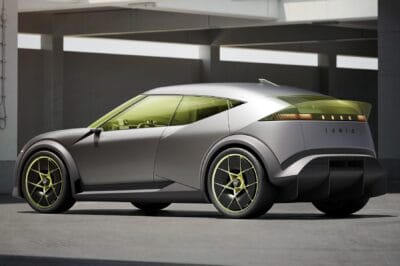
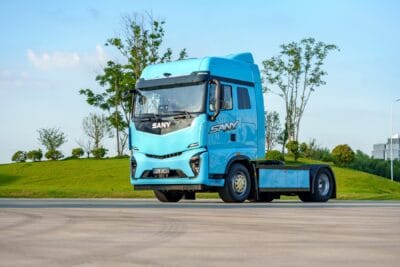
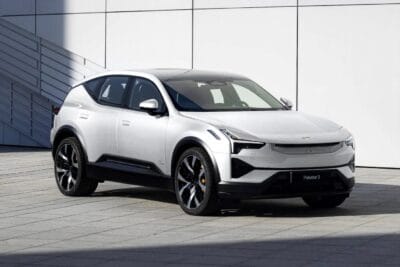
5 Comments